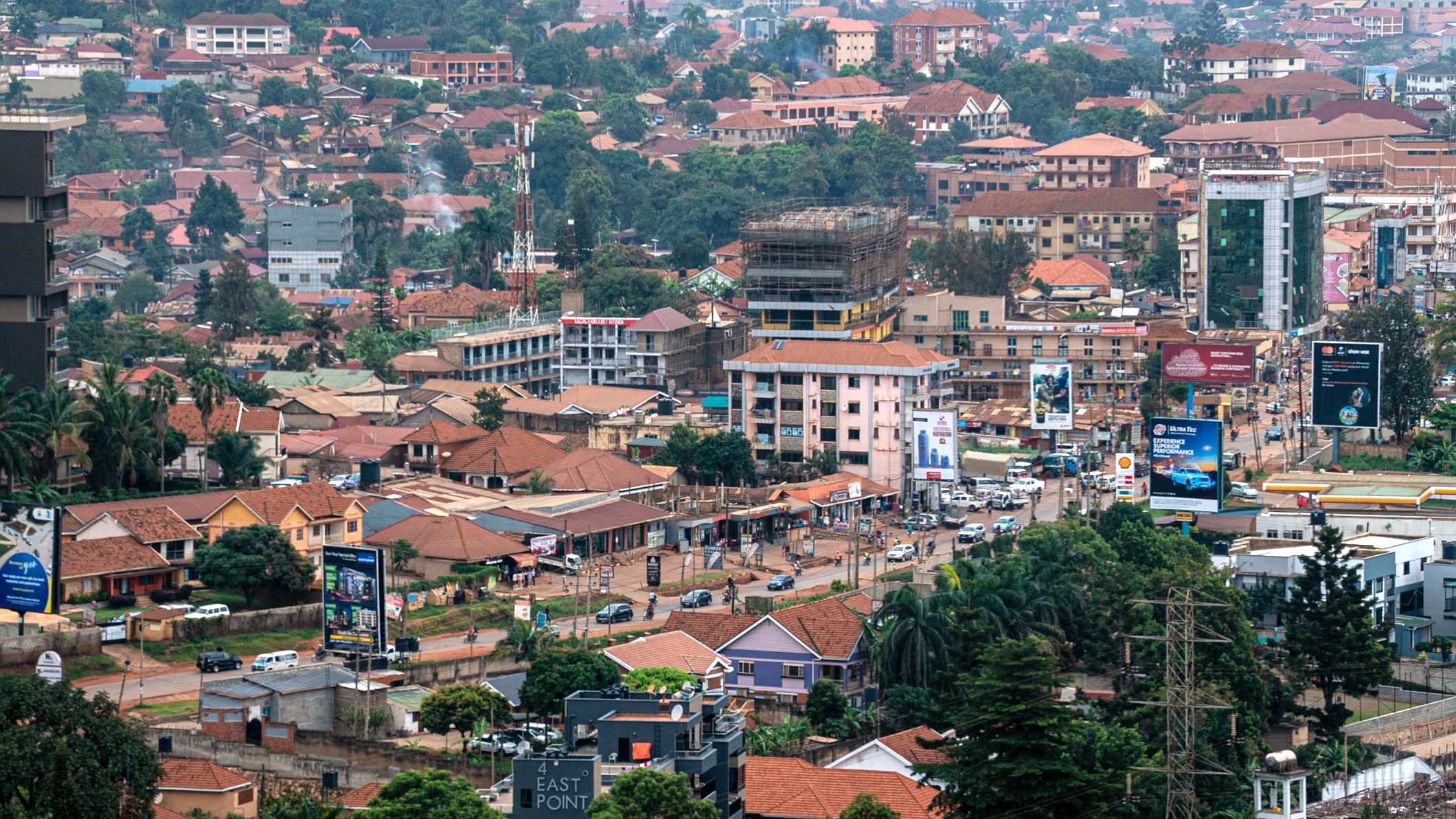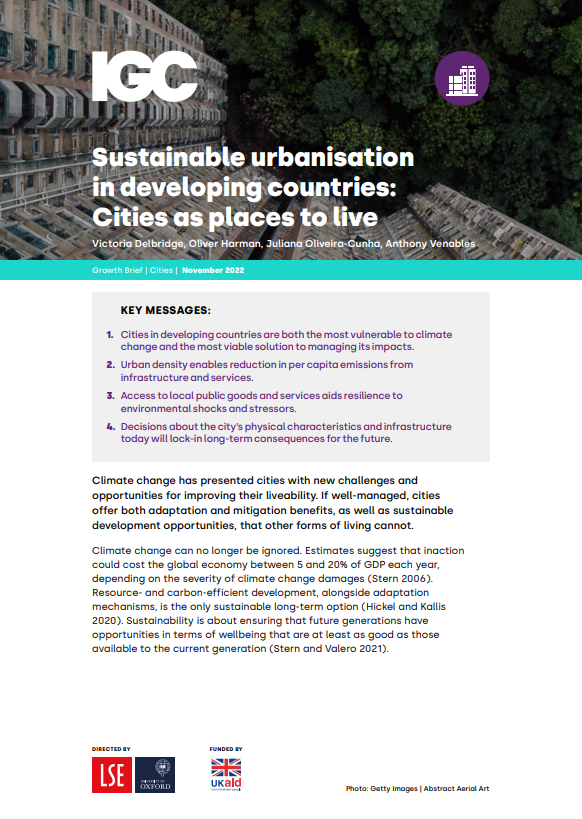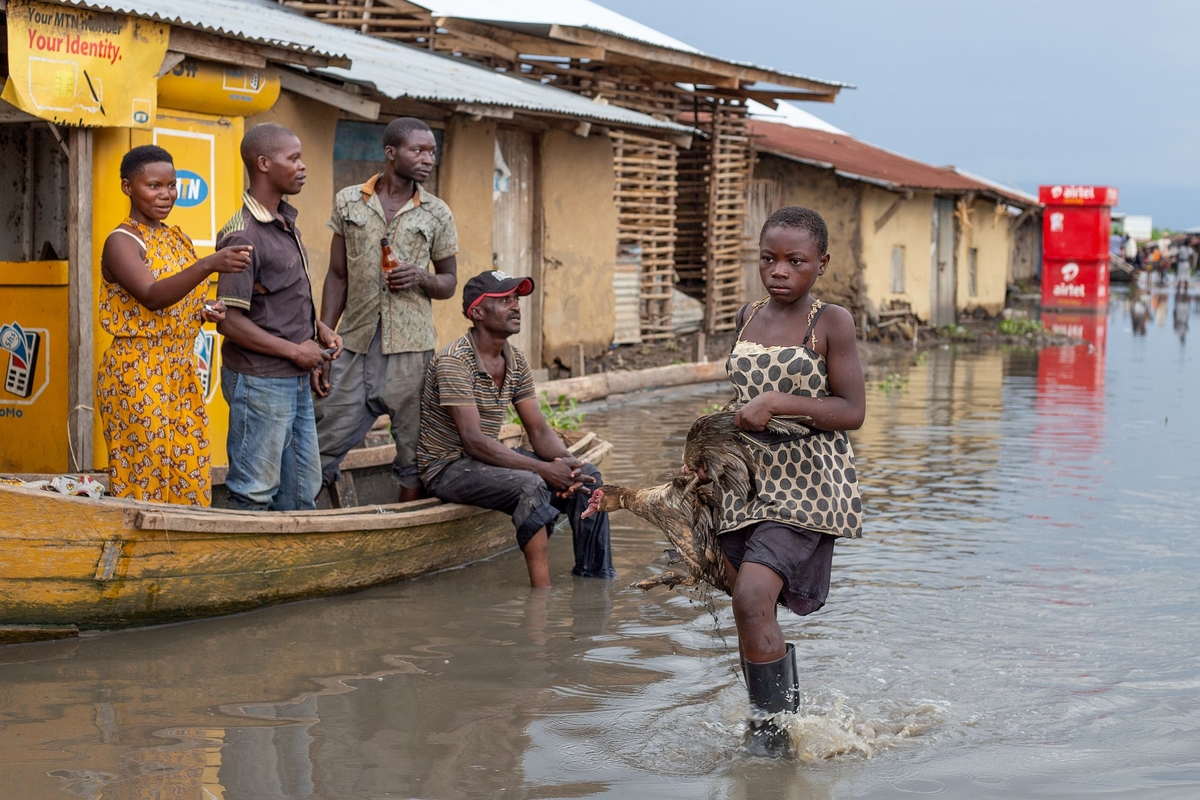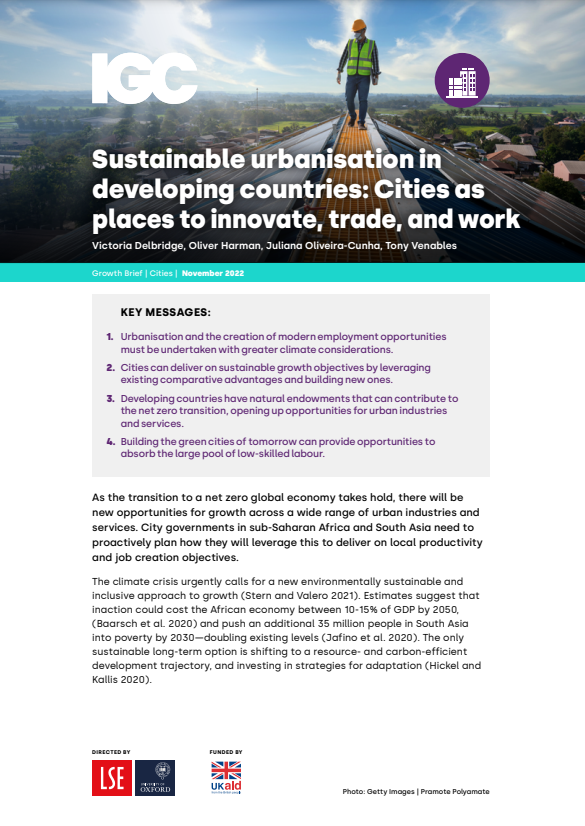- Who We Are
- How We Work
- Regional / Country Initiatives
- Legacy
- Core Themes
- Working Groups
- Portfolio & Results
- Newsroom
- Resources
Cities as Places to Live

Climate change has presented cities with new challenges and opportunities for improving their liveability. If well-managed, cities offer both adaptation and mitigation benefits, as well as sustainable development opportunities, that other forms of living cannot.

The brief Cities as places to live, produced by the International Growth Centre, discusses the potential of cities to provide resilience to the impacts of climate change through the provision of public goods and services. The brief also addresses the importance of avoiding long-term lock-in to emission-intensive infrastructure and urban design.
Climate change can no longer be ignored. Estimates suggest that inaction could cost the global economy between 5 and 20 per cent of GDP each year, depending on the severity of climate change damages. Resource- and carbon-efficient development, alongside adaptation mechanisms, is the only sustainable long-term option. Sustainability is about ensuring that future generations have opportunities in terms of well-being that are at least as good as those available to the current generation.
Getting cities right (or wrong) has long-term, locked-in consequences. This is particularly important for lower-income countries in sub-Saharan Africa and South Asia which are relatively more exposed to the effects of climate change. Developing countries that get the city-development model right have better prospects of delivering sustainable growth and improving urban resilience to climate shocks.
Climate change action — with a strategic focus on resilient, well-functioning cities — can yield strong adaptation benefits, lower per capita greenhouse gas emissions (GHG) and higher growth. Focusing public policy on urban livelihoods provides economic and environmental benefits, offering cities a chance to deliver on their sustainable urbanisation potential.
Key Messages:
1. Cities in developing countries are both the most vulnerable to climate change and the most viable solution to managing its impacts.
2. Urban density enables a reduction in per capita emissions from infrastructure and services.
3. Access to local public goods and services aids resilience to environmental shocks and stressors.
4. Decisions about the city’s physical characteristics and infrastructure today will lock in long-term consequences for the future.
1. Cities in developing countries are both the most vulnerable to climate change and the most viable solution to managing its impacts.
2. Urban density enables a reduction in per capita emissions from infrastructure and services.
3. Access to local public goods and services aids resilience to environmental shocks and stressors.
4. Decisions about the city’s physical characteristics and infrastructure today will lock in long-term consequences for the future.

About IGC:
The International Growth Centre (IGC) works with policymakers in developing countries to promote inclusive and sustainable growth through pathbreaking research. Based at LSE and in partnership with the University of Oxford, the IGC is a global research centre with a network of world-leading researchers and a set of country teams across Africa, South Asia, and the Middle East.
The International Growth Centre (IGC) works with policymakers in developing countries to promote inclusive and sustainable growth through pathbreaking research. Based at LSE and in partnership with the University of Oxford, the IGC is a global research centre with a network of world-leading researchers and a set of country teams across Africa, South Asia, and the Middle East.

